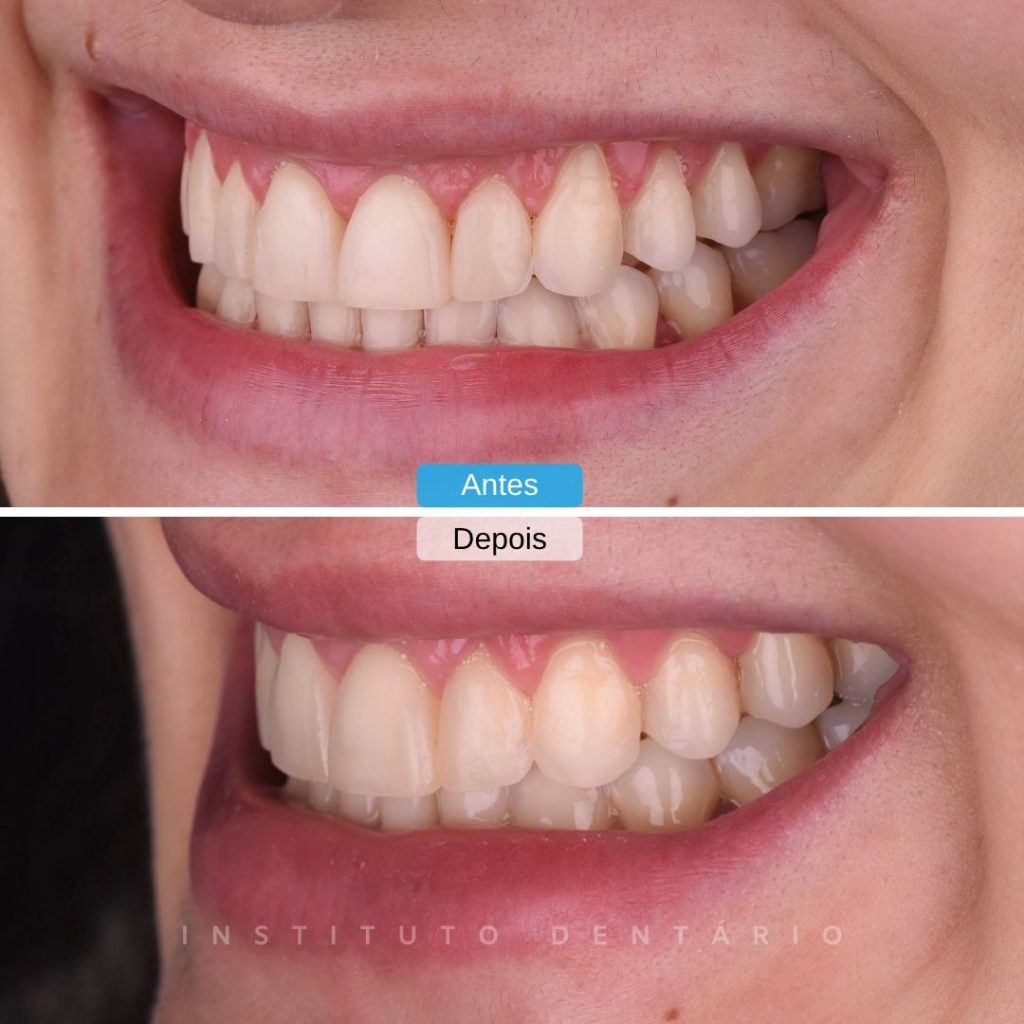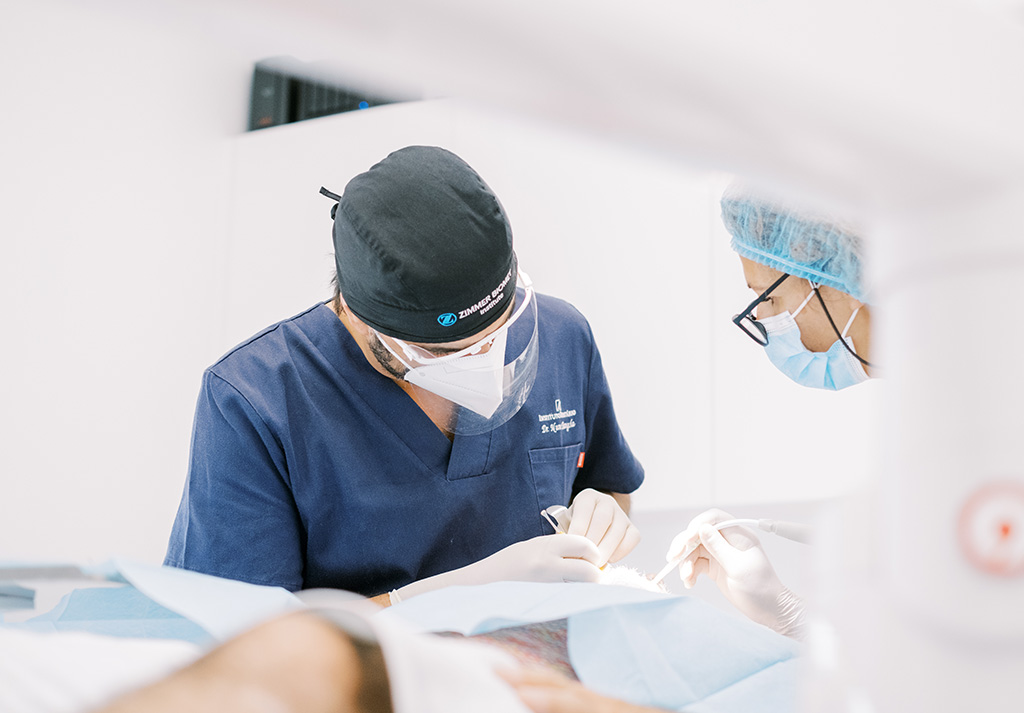
What is Periodontology?
Nowadays, the first impression that a smile makes is fundamental and, as such, it is of the utmost importance to guarantee the health of the tissues that support the teeth.
Periodontology is dedicated to the prevention, diagnosis and treatment of diseases of the gums and supporting structures of the teeth, and is the area of dentistry considered to be the basis for the longevity and maintenance of all dental treatments.
In simplified terms, we can distinguish periodontal disease between gingivitis and periodontitis.
What is Periodontology?
Nowadays, the first impression that a smile makes is fundamental and, as such, it is of the utmost importance to guarantee the health of the tissues that support the teeth.

Periodontology is dedicated to the prevention, diagnosis and treatment of diseases of the gums and supporting structures of the teeth, and is the area of dentistry considered to be the basis for the longevity and maintenance of all dental treatments.
In simplified terms, we can distinguish periodontal disease between gingivitis and periodontitis.
Types of periodontal diseases
Gingivitis
Gingivitis is an inflammation of the gums and is considered the initial stage of periodontal disease. This gum inflammation translates into a darker red colour and a swollen appearance, which causes easy bleeding.
Gingivitis is reversible with professional treatment, through scaling and plaque removal, and good oral hygiene practices.
If not diagnosed and treated in good time, gingivitis can develop into a more serious and complex problem: periodontitis.
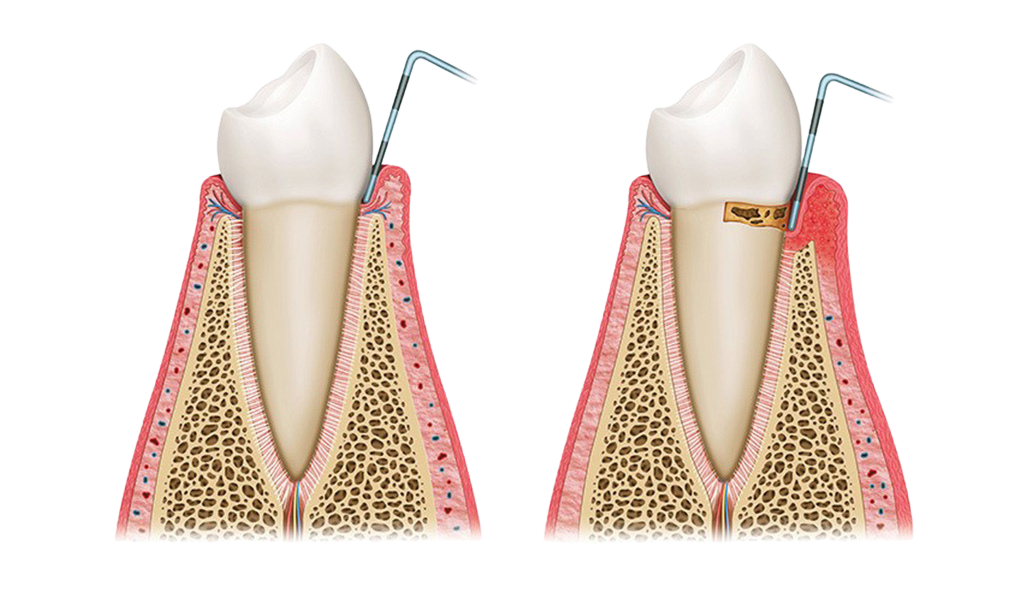
Types of periodontal diseases
Gingivitis
Gingivitis is an inflammation of the gums and is considered the initial stage of periodontal disease. This gum inflammation translates into a darker red colour and a swollen appearance, which causes easy bleeding.
Gingivitis is reversible with professional treatment, through scaling and plaque removal, and good oral hygiene practices.
If not diagnosed and treated in good time, gingivitis can develop into a more serious and complex problem: periodontitis.

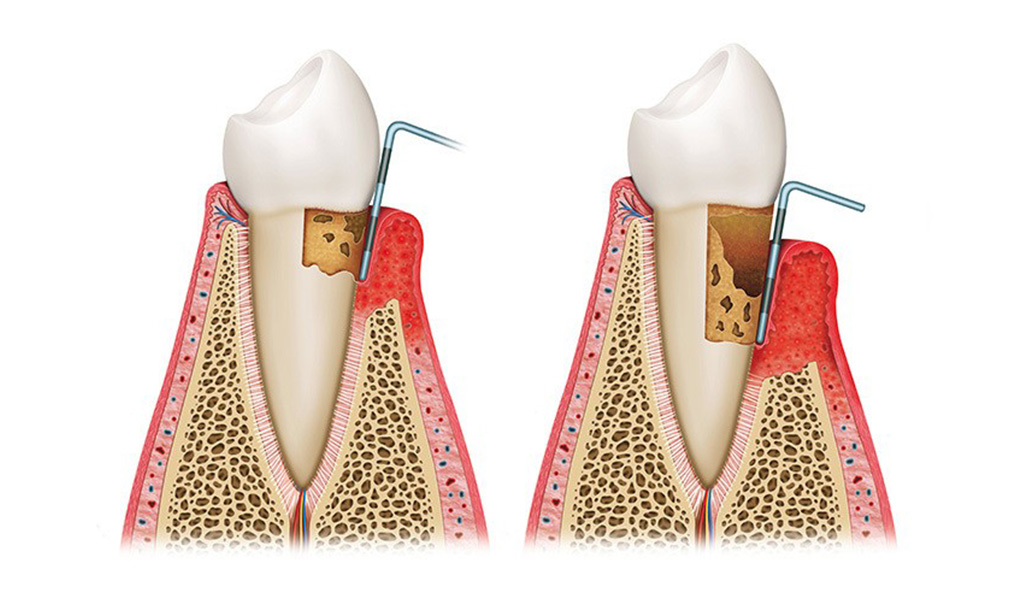
Periodontitis
In periodontitis, the continuous and prolonged presence of gingival aggression through the presence of bacterial plaque and tartar leads to irreversible destruction of the supporting structures of the teeth, with resorption of the bone and recession of the gums.
This periodontal disease can lead to tooth mobility, the appearance of gaps between teeth and/or abscesses.
Ultimately, one or more teeth are lost.
Periodontitis
In periodontitis, the continuous and prolonged presence of gingival aggression through the presence of bacterial plaque and tartar leads to irreversible destruction of the supporting structures of the teeth, with resorption of the bone and recession of the gums.
This periodontal disease can lead to tooth mobility, the appearance of gaps between teeth and/or abscesses.
Ultimately, one or more teeth are lost.

Peri-implant Diseases
Like periodontitis, peri-implantitis is an inflammatory disease caused by bacteria present in plaque, but in this case, instead of affecting the supporting tissues of the teeth, it affects the tissues that surround and support the dental implants.
It is a disease that is estimated to affect between 30 and 58 per cent of patients rehabilitated with dental implants and which, if not detected and treated in time, develops around the implants in the same way as in the teeth, ultimately leading to early loss of the implants.
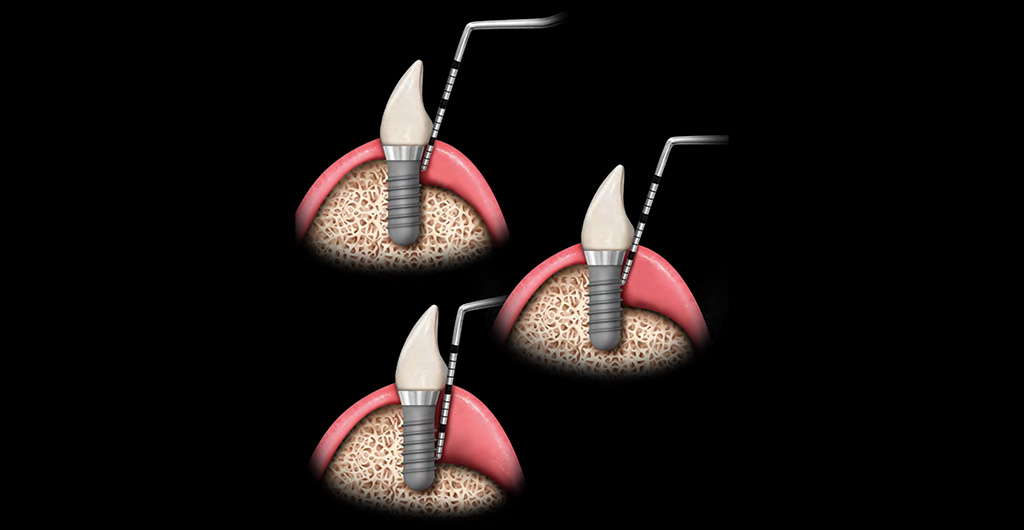
Peri-implant Diseases
Like periodontitis, peri-implantitis is an inflammatory disease caused by bacteria present in plaque, but in this case, instead of affecting the supporting tissues of the teeth, it affects the tissues that surround and support the dental implants.
It is a disease that is estimated to affect between 30 and 58 per cent of patients rehabilitated with dental implants and which, if not detected and treated in time, develops around the implants in the same way as in the teeth, ultimately leading to early loss of the implants.

Step by step treatment of Periodontal diseases
Early diagnosis in periodontology is essential to prevent the progression of the disease and preserve the supporting structures of the teeth as much as possible. The quicker the diagnosis, the simpler and more effective the treatment.
The first step in treatment involves removing all accumulated plaque and tartar by scraping and root smoothing, as well as teaching brushing techniques and removing plaque between the teeth using dental floss and/or brushes. It is essential that the patient learns and maintains correct oral hygiene.
In cases where periodontal disease progresses to more advanced stages and the tissues or bone supporting the teeth are too damaged to reverse naturally, it is necessary to resort to surgical treatment in order to eliminate the infection and provide correct anatomy of the tissues. The aim is to halt the progression of the disease so that the patient can maintain correct oral hygiene.
After intervention by the dentist using surgical and non-surgical techniques to treat periodontal disease, the patient is re-assessed in order to control the pathology and define action strategies, entering the maintenance programme, with a periodicity adapted to each case and specific oral hygiene measures.
Step by step treatment of Periodontal diseases
Early diagnosis in periodontology is essential to prevent the progression of the disease and preserve the supporting structures of the teeth as much as possible. The quicker the diagnosis, the simpler and more effective the treatment.
The first step in treatment involves removing all accumulated plaque and tartar by scraping and root smoothing, as well as teaching brushing techniques and removing plaque between the teeth using dental floss and/or brushes. It is essential that the patient learns and maintains correct oral hygiene.
In cases where periodontal disease progresses to more advanced stages and the tissues or bone supporting the teeth are too damaged to reverse naturally, it is necessary to resort to surgical treatment in order to eliminate the infection and provide correct anatomy of the tissues. The aim is to halt the progression of the disease so that the patient can maintain correct oral hygiene.
After intervention by the dentist using surgical and non-surgical techniques to treat periodontal disease, the patient is re-assessed in order to control the pathology and define action strategies, entering the maintenance programme, with a periodicity adapted to each case and specific oral hygiene measures.
Faq
The onset of this disease is related to several factors, the main one being the presence and accumulation of plaque and tartar. There are also other risk factors that determine the prevalence and evolution of this pathology, such as:
- heredity
- smoking habits
- stress-related factors
- hormonal changes such as pregnancy
- systemic diseases such as uncontrolled diabetes.
Patients should be alert to the following signs of periodontal disease: red and enlarged gums, gums that bleed when brushed or spontaneously, gum recession or retraction, sensitive teeth, bad breath or a bad taste in the mouth and mobile teeth.
At the Instituto Dentário Alto dos Moinhos we carry out various periodontal plastic therapy procedures – periodontal pocket reduction surgery, guided tissue regeneration, crown lengthening, gum grafts – which in most cases allow our patients to achieve a more beautiful and healthy smile.
CONTACT
Schedule yout Appointment
Leave your contact details and we’ll book your appointment within 24 hours.


